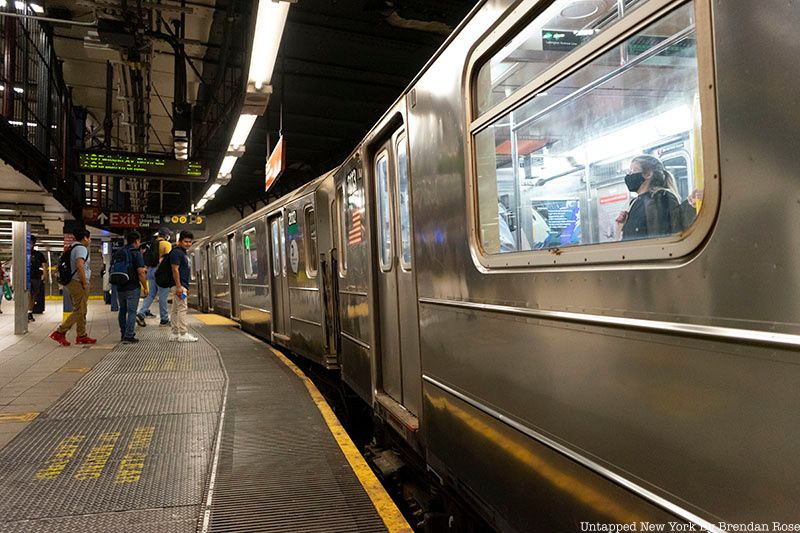Last-Minute NYC Holiday Gift Guide 🎁
We’ve created a holiday gift guide with presents for the intrepid New Yorker that should arrive just in time—


As the downtown 6 train rumbles just below the pavement of Park Avenue, it moves – like most of Manhattan’s subway system – along a straight track. When it enters the 14th Street-Union Square station, however, it encounters an anomaly in the system – a curved platform. The train screeches and groans as it enters the station, with many riders plugging their ears to the unwelcome cacophony. As the 6 comes to a halt, the doors remain closed momentarily to allow massive metal plates to thump into place, closing a yawning gap between the subway doors and the curved platform. This mechanical fix for the seeming flaw in the system has become just a routine part of getting from point A to point B for thousands of commuters every day. The question that many, like me, have undoubtedly asked is, “why is there a sharp bend in an otherwise straight stretch of track?”
A unique station, the Union Square platform is along one of the original subway lines: the Interborough Rapid Transit Company (IRT) train line that runs up and down the spine of Manhattan. IRT tunnels were constructed using a “cut and cover” method: basically, by digging a massive trench into existing streets and then covering it back up. The method is significantly faster and cheaper than boring tunnels deep underground, but it does come with limits. Engineers are forced to follow the aboveground landscape of the city as they map out the path of the tunnel.
“The reason for the curve on the downtown Union Square platform is a combination of what was going on above ground at the turn of the century, specifically property lines, monuments in what is now Union Square Park, and the street alignment,” explained New York Transit Museum Curator Jodi Shapiro in an interview with Untapped New York. “Since the Interborough Rapid Transit Company built this portion of the line with cut and cover, these factors dictated where they could dig the tunnels.”
As Park Avenue passes along the east side of the park in it veers off towards the southeast, becoming Fourth Avenue causing the curve. Initially, the curved platform did not cause any problems. But ridership on the subway quickly grew, and train cars had to be added to address the demand. Trains went from five and seven cars to eight and then eventually the current ten cars. The new trains did not align with the Union Square platform creating an unnerving gap between the train and the platform’s edge. After more doors were added to the train cars, the city’s engineers had to come up with a solution. “Because of the inclusion of center doors, and the eventual extension of platforms to accommodate longer trains, a solution was needed to make boarding and alighting trains easier and safer,” Shapiro remarked.
Other stations in the system are curved, but few have such an extreme angle. Aside from the Union Square platform, few other locations have platform extenders (South Ferry is the only other station with operational extenders). “City Hall is an example of a station that closed in part due to the gap that became an issue once subway cars were built with center doors,” reflected Shapiro.

The heavy metal Union Square platform extenders are pushed into place using hydraulic pistons. They were human-operated until the 1960’s when it was automated using a sensor to tell when the train is in place. The extenders have not come without problems. At times they will malfunction and fail to extend even if the train doors open. And in 2010, a man fell in between the extender and the train, becoming trapped when the plate extended. The curve has also made making the platform fully accessible to those with disabilities almost impossible, according to an MTA report published in 2020.
The curve has become a defining feature of one of the busiest stations in the system. This lingering vestige of a different era at Union Square platform shows us how the subway system has grown and evolved as the city above has boomed.
To learn more about the Union Square station and the history and quirks of New York City’s subway system join us on the NYC Underground Subway Tour.
Subscribe to our newsletter